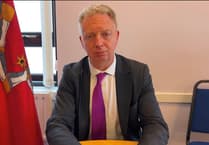A new method of setting the minimum wage has been brought in after concerns over the impact the current system has on businesses.
The government had considered bringing the minimum wage up to the level of the living wage but businesses raised concerns over the impact it would have on their viability.
Instead, the minimum wage rate is to be set at 66% of the Isle of Man median earnings, following Tynwald approval at the July sitting.
Additionally, to provide greater certainty to both businesses and those earning the lowest rate, minimum wage proposals will be brought to Tynwald for approval in October each year.
These changes formed part of a series of recommendations following the publication of a review into the minimum wage methodology and its link with the living wage.
A review into the impact of this policy be conducted and published by the end of December 2026, together with agreeing that any relevant legislative changes.
Tim Johnston MHK, Minister for Enterprise commented: ‘Determining the appropriate level for the minimum wage is a complex issue, whereby government must balance ensuring fair pay for low-income workers with maintaining economic stability.
‘Over the summer the Department, working with Treasury, will complete the necessary work required to bring forward the new rates to October Tynwald and, subject to approval, the new Minimum Wage rates will be implemented from April 2026.’
Dr Alex Allinson MHK, Treasury Minister added: ‘I am pleased we can now provide a clearer and more predictable rate for both workers and businesses going forward, offering them a level of certainty that they have been asking for.
‘Tynwald now have an agreed method of calculating the minimum wage which much better reflects pay rates on our Island and shares the benefits of the continued growth in our economy.’
.jpeg?trim=0,0,0,0&width=752&height=501&crop=752:501)
.jpeg?width=209&height=140&crop=209:145,smart&quality=75)


